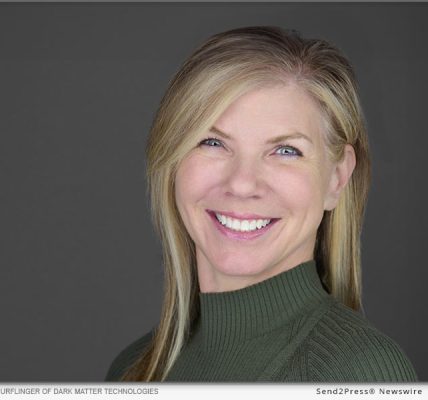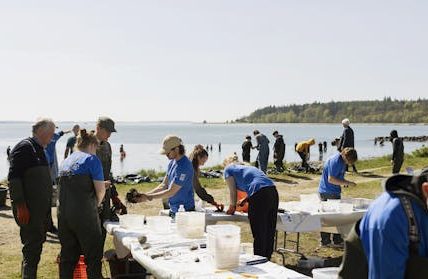Nipple-covered sea creatures and aquariums filled with tears – Sea Inside’s alternative perspective on oceans in crisis
There has been a conspicuous turn to the sea as inspiration for art and exhibitions since the mid-2010s. This is a trend we have charted in our ongoing collaborative research project, Curating the Sea. So prolific has this become, that there are even gallery spaces dedicated entirely to the sea in contemporary art.
The sea has, of course, been the subject of art throughout history. However, our investigation into contemporary art and exhibitions has revealed a shift from celebrations of oceanic abundance and wonder towards more political projects.
In our research, we have argued for the importance of curation as a way to confront the issues facing the oceans today. So it was only natural that we turn our hands to curating our own exhibition about the sea, based on our extensive collaborative research.
Sea Inside is part of the current season at the Sainsbury Centre in Norwich, which asks, “can the seas survive us?”
Looking for something good? Cut through the noise with a carefully curated selection of the latest releases, live events and exhibitions, straight to your inbox every fortnight, on Fridays. Sign up here.
Western art has tended to frame the ocean as an unfathomable and formidable force in the tradition of the sublime: art that produces or is inspired by the strongest emotions the mind is capable of feeling, often arising from the encounter with the natural world. Sea Inside counters this perspective. Collectively, artworks in the exhibition portray the sea not as a surreal or alien space, but as an entity that is intimately connected to humans.
Many Indigenous and diasporic communities have long been aware of the profound human connection to the sea. In our exhibition, Shuvinai Ashoona’s coloured pencil drawings illustrate the intermingling of Inuit mythology with everyday life in the Canadian Arctic. In one scene, mythical marine creatures populate a dentist’s office.
Meanwhile, Tyler Eash’s sculpture features a shell of the critically endangered abalone mollusc. They are known as “grandmother shells” among North American west coast Indigenous cultures as they are commonly passed down through families by female elders. The work speaks to ties of kinship (human and animal), their fragility and resilience.
A new sculpture we commissioned by the artist Gabriella Hirst explores tales of men being swallowed by whales alongside the industrial exploitation of whales in the 19th century. This inside-out journey from the whale’s belly to lighting up European cities (as whale blubber was used in oil lamps) aligns the perceived threat of these animals with capitalistic justifications for their slaughter. The sculpture is made from agricultural plastic, itself a product of the petrochemical industry that largely replaced whaling as a source of energy, lighting and everyday objects.
Beyond eco-realism
The perspective Sea Inside offers is found not only in the artworks’ subject matter but also their approach.
There has been a tendency towards a documentary approach within ecologically oriented exhibitions. This risks relegating art to a tool of climate communication and even replicating the sort of technological interventions into the landscape – and seascape – that the respective artworks and exhibitions call into question.
The artworks in Sea Inside examine the uses and limits of visual mediums for understanding the sea. Hiroshi Sugimoto’s photograph of a natural history diorama reframes this three-dimensional reconstruction of a seabed from hundreds of millions of years before the advent of humans, whereas Kasia Molga’s miniature aquaria entangle human tears and marine life.
Artists in the exhibition play with historical display practices and their ability to bring ocean life into human spaces while endeavouring to overcome the sense of detachment they have at times created.
In a video work by El Morgan, the artist aligns jellyfish breeding in a lab with her own experience of assisted reproduction. In doing so she momentarily suspends the distance from such radically different lifeforms and expands our understandings of gestation.
Likewise, Laure Prouvost’s speculative “cooling system” for global warming – a beautiful Murano glass shower-head that looks like an amorphous sea creature covered in nipples – reimagines models of care as both more-than-human and global.
Works such as these provide playful and humorous approaches to thinking through a topic with a serious undercurrent: our fragile ocean ecologies.
The artworks in Sea Inside offer ways of engaging with the existential threats facing our oceans that are emotive, imaginative and often very funny. They reflect on material culture, architecture and technology to acknowledge the aesthetic dimensions of an era that has been termed the Anthropocene, after the human impact on the planet, and even the Hydrocene in recognition of the centrality of water to our current epoch.
These subtler responses to the sea within offer visions of promise for the oceans’ and our own mutual survival.
Sea Inside is on show at the Sainsbury Centre, Norwich, until October 26 2025.
Get your news from actual experts, straight to your inbox. Sign up to our daily newsletter to receive all The Conversation UK’s latest coverage of news and research, from politics and business to the arts and sciences.
Sarah Wade works in the Department of Art History & World Art Studies, University of East Anglia, based at the Sainsbury Centre. Her ocean related research has received funding from University of East Anglia and the Paul Mellon Centre for Studies in British Art. She is a member of the Museums Association.
Pandora Syperek does not work for, consult, own shares in or receive funding from any company or organisation that would benefit from this article, and has disclosed no relevant affiliations beyond their academic appointment.


